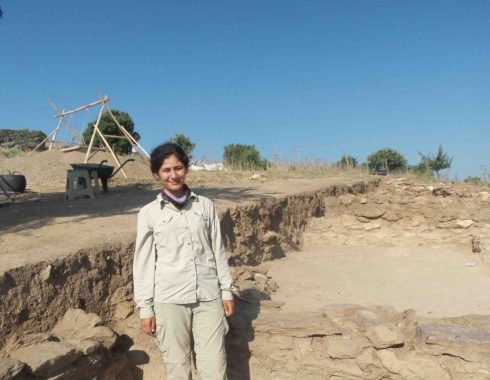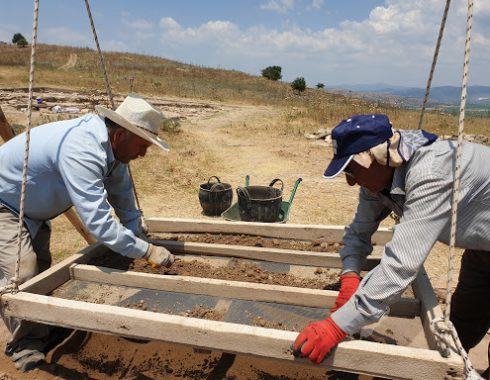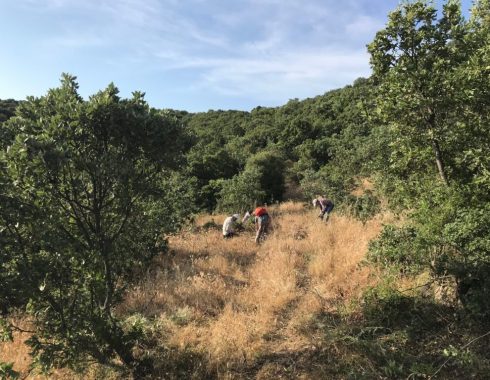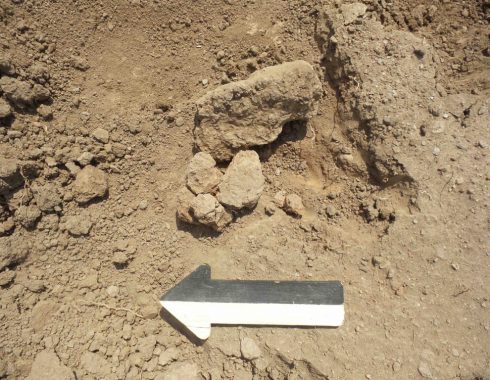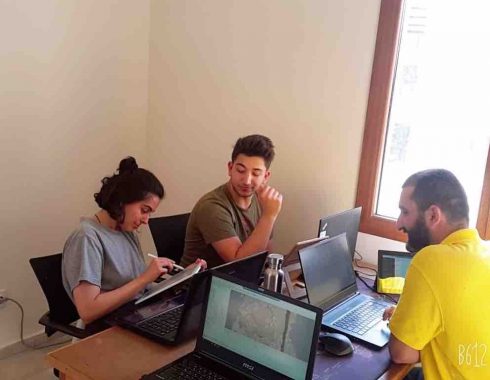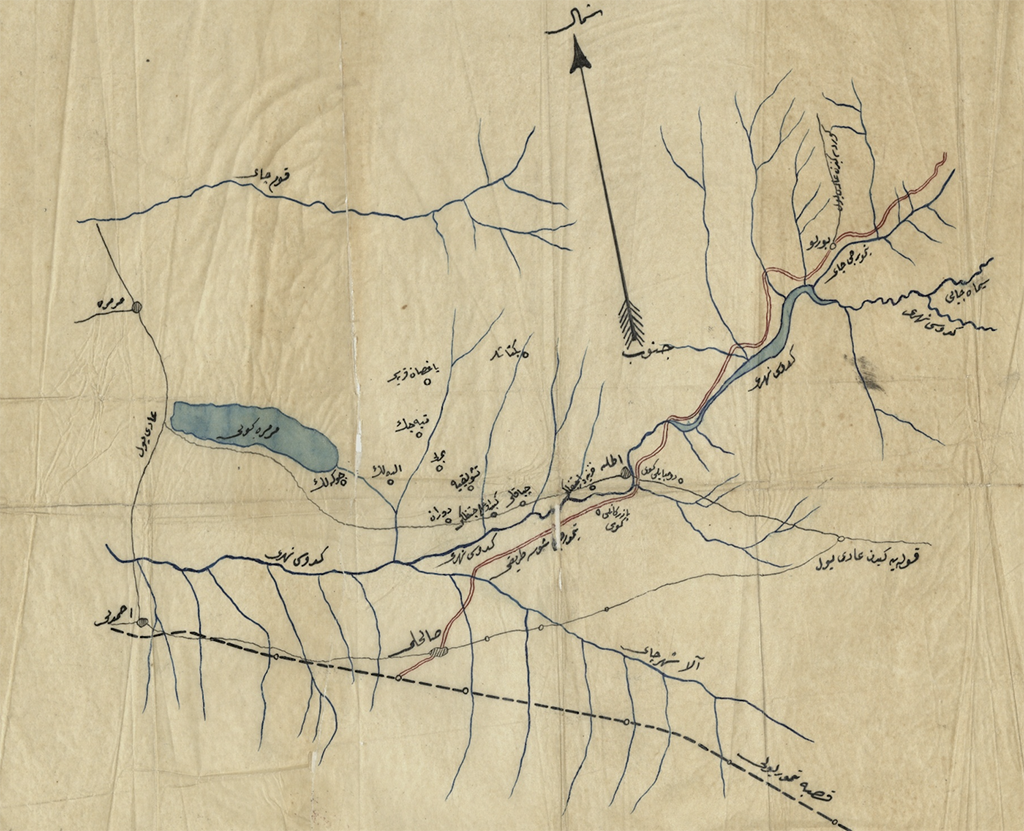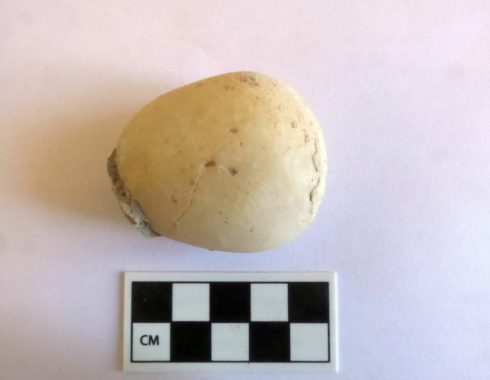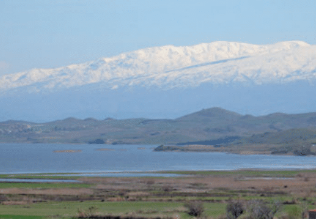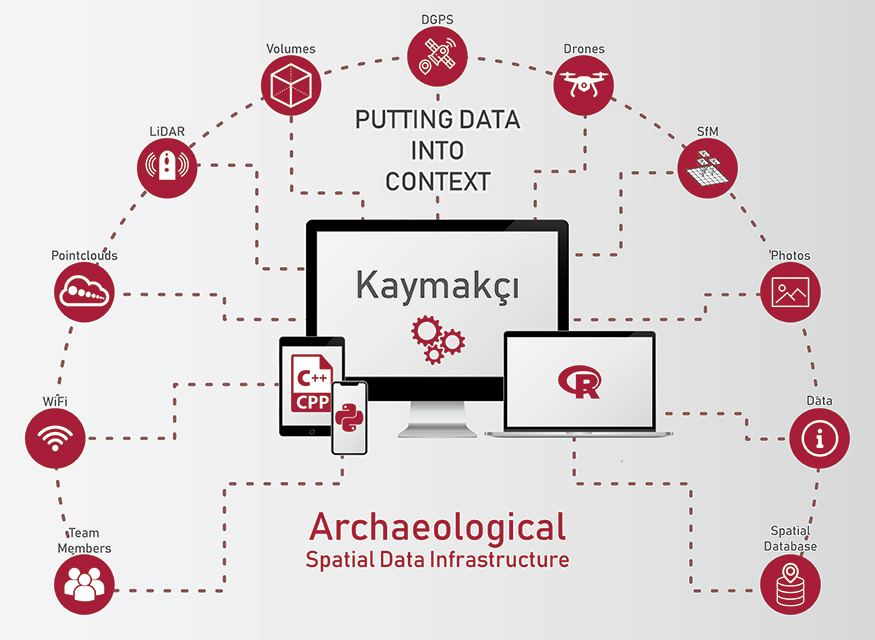The research center, which among other activities hosts the archaeological mission working at the nearby site of Kaymakçı during the summer months, is located near the village of Hacıveliler in Gölmarmara, Manisa. Overlooking Lake Marmara, the complex consists of different buildings including dormitories, a kitchen and dining room, and work rooms and laboratories for various projects.
Designed by Tim Frank, the architecture of the center acts as one with the local setting. This “performance” approach to design allowed Tim to embrace the various elements of the site, especially the north summer wind and the warm morning sunlight, to maintain temperature. The overhangs and passageways between buildings and the tall ceilings allow for air to circulate with the afternoon and evening summer winds. During the fall through early spring, the glass windows capture the sunlight for passive heating. Tim tested each of his designs using computational fluid dynamics. In addition, he worked extensively with all team members to design personal, communal, and working spaces to meet the needs of an interdisciplinary team.
Affiliated team personnel
Tim Frank, Kennesaw State University


